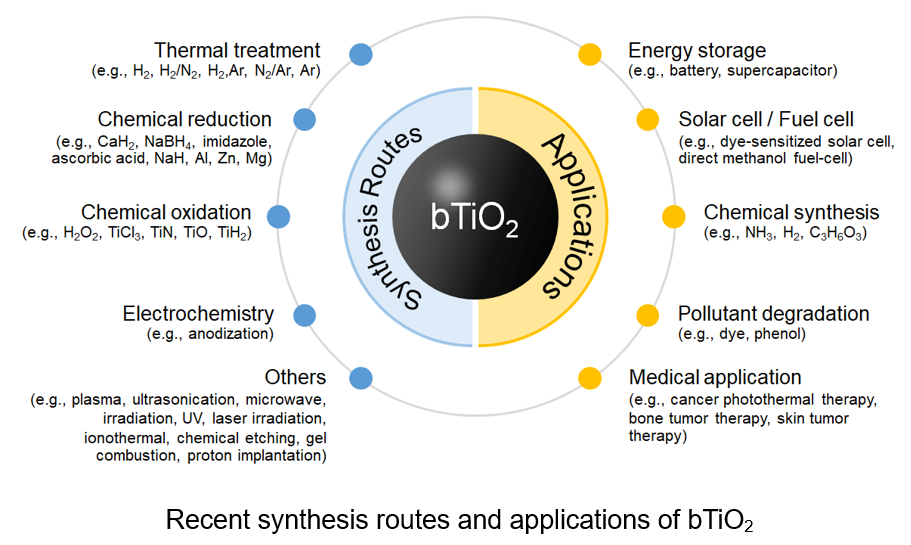Hydrogen is increasingly recognized as a promising sustainable energy carrier poised to meet global energy demands due to its exceptional energy density, cleanliness, and storage capabilities. Its versatile applications span various industries, including oil refining, steel/metal production, chemical synthesis, and transportation. Over 95% of hydrogen (H2) is derived from fossil fuels or renewable sources, leading to the release of carbon dioxide (CO2) as a by-product. Significant efforts are underway to address this challenge and develop environmentally friendly methods for hydrogen production. The photocatalytic process emerges as a green chemical solution, capable of generating H2 under atmospheric conditions without emitting CO2 or other harmful substances. Black TiO2 (bTiO2), distinguished by its high visible light absorption and exceptional thermal-chemical resistance, is currently under development for photocatalytic H2 production, leveraging its inherent defects. This review highlights recent advancements in the laboratory-scale development of bTiO2, elucidating various strategies such as defective self-doping, metal/non-metal doping, and coupling with conductive materials or semiconductors. Among these strategies, the coupling bTiO2 with semiconductors demonstrates the most promising results in photocatalytic H2 production. For instance, the mesoporous TiO2/CeO2 nanocomposite aerogel, synthesized via thermal treatment in a 5% H2/Ar atmosphere, achieved an approximate yield of 182 mmol/g⋅h of H2 under visible light illumination. This comprehensive review aims to expand perspectives on designing and customizing bTiO2 nanocomposites for practical applications in sustainable energy production.

Keywords: | Black TiO2, Defective TiO2, Photocatalysis, Hydrogen production |
Reference: | Tuntithavornwat, S., Saisawang, C., Ratvijitvech, T., Watthanaphanit, A., Hunsom, M., & Kannan, A. M. (2024). Recent development of black TiO2 nanoparticles for photocatalytic H2 production: An extensive review. International Journal of Hydrogen Energy, 55, 1559–1593. https://doi.org/10.1016/j.ijhydene.2023.12.102 |
